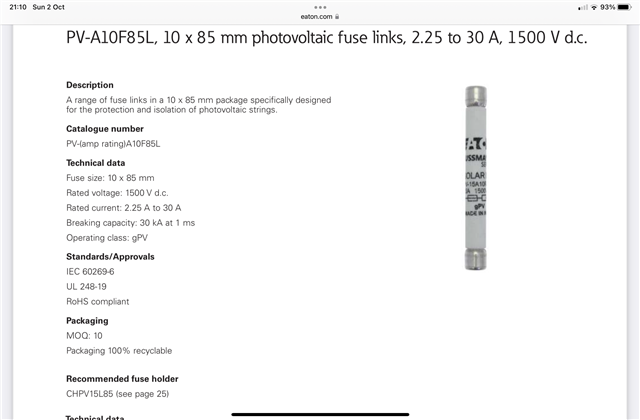I've been trying to make some sense of the newly re-written section 712 (PV) - but I'm struggling with a few things - firstly can anyone tell me what "IMOD_MAX_OCPR" represents? (e.g. in regs 712.431.101 and 102). Unlike most one-off symbols (like Np) it's not explained below, nor can I find it on page 46 (Symbols used in BS 7671). It seems to be something to do with an overcurrent protective device, but seemingly not it's nominal rating, since part of the requirement is that In ≤ IMOD_MAX_OCPR, nor I guess breaking capacity since 1.35 IMOD_MAX_OCPR ≤ (Ns -1) ISC MAX.
- Andy.

